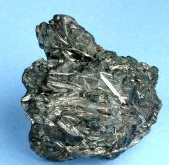 Tin is a soft dense metal that can be produced using several manufacturing techniques. It is frequently extruded to produce plating anodes or solder but there are other options for tin manufacturing such as casting.
Tin is a soft dense metal that can be produced using several manufacturing techniques. It is frequently extruded to produce plating anodes or solder but there are other options for tin manufacturing such as casting.
Of all the uses of tin, solder makes up 50 percent of the total world use of tin. Plating follows at 16 percent and chemical production is 13 percent. Tin has very good electrical and heat transfer properties making it a superior metal in these applications. Tin is also corrosion resistant because it builds an oxide layer on the material naturally.
With a melting point of 450 degrees and a density of 7.365 g/cc, tin can also be cast or die cast using permanent mold or partial mold casting. Most people believe extrusion is the only option for tin processing; but there are many others. Tin can also be stamped, spun, press formed, impact extruded, rolled and welded, burned, machined and router cut. This wide variety of manufacturing techniques allows for a wide variety of processing options.
Tin is frequently used in the alloying of other metals including lead, bismuth and pewter to add better mechanical properties. A little tin can significantly improve the tensile strength while metal improving flow.
| Density | 7.365 g/cc |
| Melt Point | 450f |
| Brinell Hardness | 350MPa |
| Shear modulus | 18GPa |
| Yong’s modulus | 50GPa |

